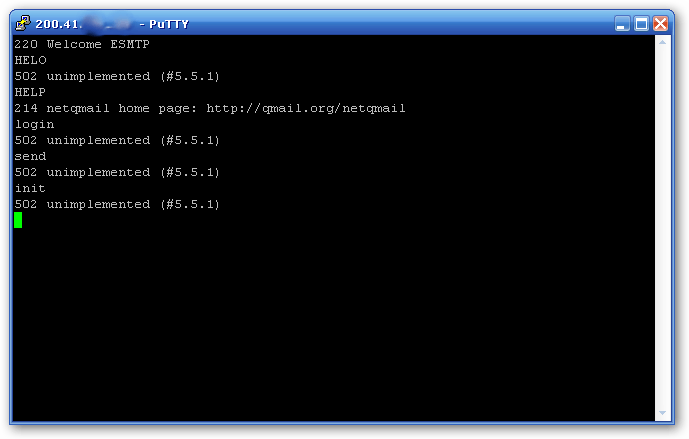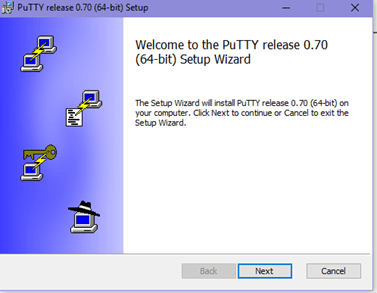

The saved settings will appear in their boxes in the configuration section.
 Once you save the session, you can just select it and select Load. The “ Load, save or delete a stored session” section is an option to set some connection settings without having to input all the details again when needed. Upon selecting Serial in the connection type section, the Host Name and Port bars will be replaced by Serial Line and Speed respectively. However, if the user chooses the Rawtype, the bar stays blank and requires them to enter the port manually by the user. The Port bar is a section that fills automatically upon selecting the type of connection. Connection-type radio buttons let the users choose from the kind of network they plan to connect to. The Host Name (or IP Address)bar is where the user name or IP address of the desired server to be connected will be input. It is a preliminary panel where you have to specify certain options before you start the session. With this successful installation, go to the location folder where the application is installed and run the. Click on Finish to end the setup and to close the dialogue box. Select the product features that you want to install in your system and click on install. Click on next and then continue to select the path and location for the installation. Once it is successfully downloaded on Windows then follow the following steps to install the software: PuTTY can be used with local serial port connections too. IPv6 is supported through network communication layer, and the SSH protocol supports the delayed compression scheme. It can even emulate and mirror control sequences from xterm, VT220, VT102, or ECMA-48 terminal emulation, and allows local, remote, or dynamic port forwarding with SSH (including X11 forwarding). Moreover, PuTTY supports SSO through GSSAPI, which includes user-provided GSSAPI DLLs. PuTTY also fully supports alternate ciphers such as AES, 3DES, RC4, Blowfish, DES, and Public-key authentication and also uses its own format of key files – PPK. PuTTY supports multiple variations on the secure remote terminal, and provides its users with the control over the SSH encryption key and protocol version. Session tabs are not supported directly in PuTTY but many available wrappers do that. Plink is a command-line connection tool used for sessions that are non-interactive. PuTTY comes bundled with “pscp” and “psftp” which are command-line SCP and SFTP clients respectively.
Once you save the session, you can just select it and select Load. The “ Load, save or delete a stored session” section is an option to set some connection settings without having to input all the details again when needed. Upon selecting Serial in the connection type section, the Host Name and Port bars will be replaced by Serial Line and Speed respectively. However, if the user chooses the Rawtype, the bar stays blank and requires them to enter the port manually by the user. The Port bar is a section that fills automatically upon selecting the type of connection. Connection-type radio buttons let the users choose from the kind of network they plan to connect to. The Host Name (or IP Address)bar is where the user name or IP address of the desired server to be connected will be input. It is a preliminary panel where you have to specify certain options before you start the session. With this successful installation, go to the location folder where the application is installed and run the. Click on Finish to end the setup and to close the dialogue box. Select the product features that you want to install in your system and click on install. Click on next and then continue to select the path and location for the installation. Once it is successfully downloaded on Windows then follow the following steps to install the software: PuTTY can be used with local serial port connections too. IPv6 is supported through network communication layer, and the SSH protocol supports the delayed compression scheme. It can even emulate and mirror control sequences from xterm, VT220, VT102, or ECMA-48 terminal emulation, and allows local, remote, or dynamic port forwarding with SSH (including X11 forwarding). Moreover, PuTTY supports SSO through GSSAPI, which includes user-provided GSSAPI DLLs. PuTTY also fully supports alternate ciphers such as AES, 3DES, RC4, Blowfish, DES, and Public-key authentication and also uses its own format of key files – PPK. PuTTY supports multiple variations on the secure remote terminal, and provides its users with the control over the SSH encryption key and protocol version. Session tabs are not supported directly in PuTTY but many available wrappers do that. Plink is a command-line connection tool used for sessions that are non-interactive. PuTTY comes bundled with “pscp” and “psftp” which are command-line SCP and SFTP clients respectively.








